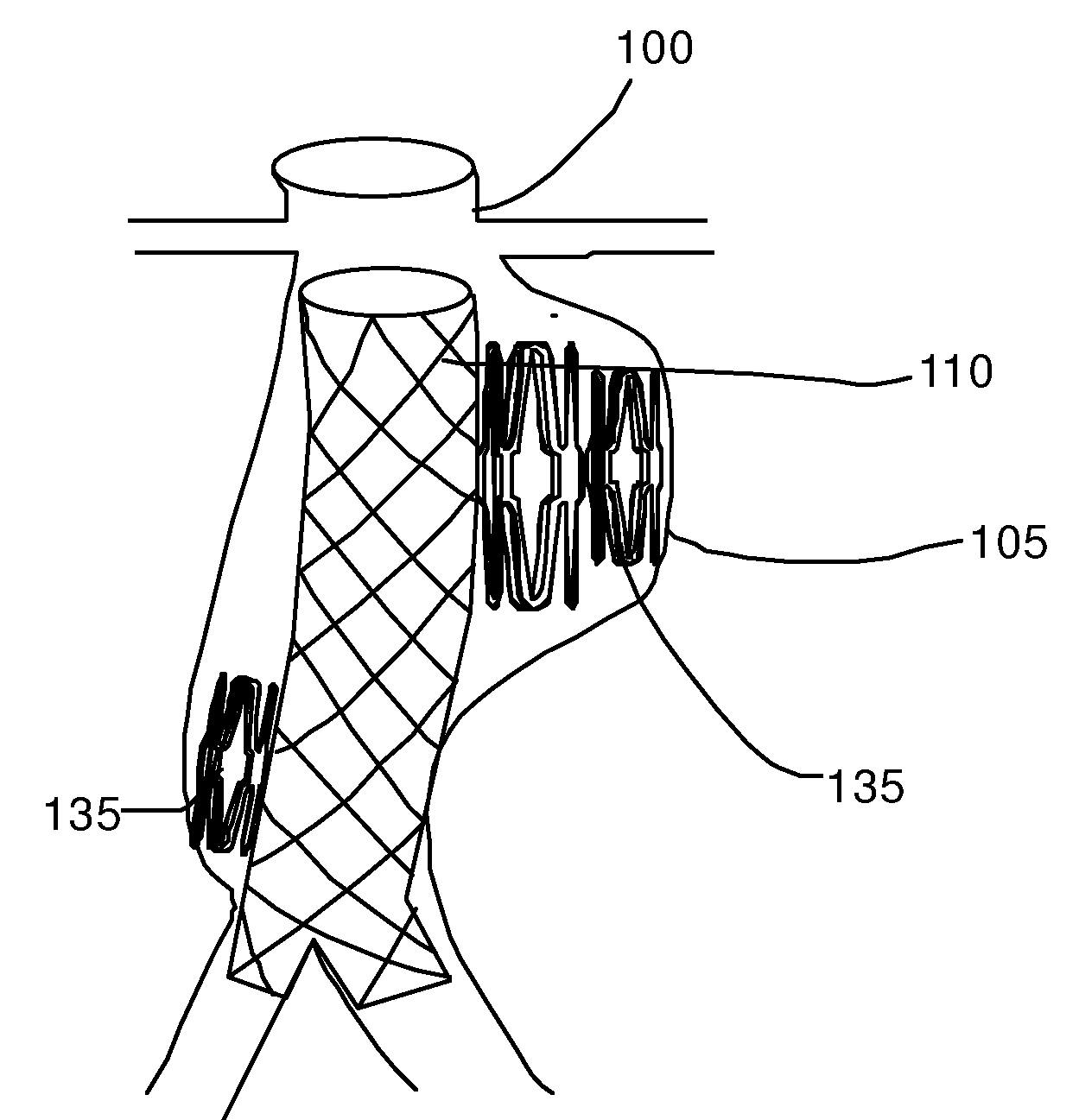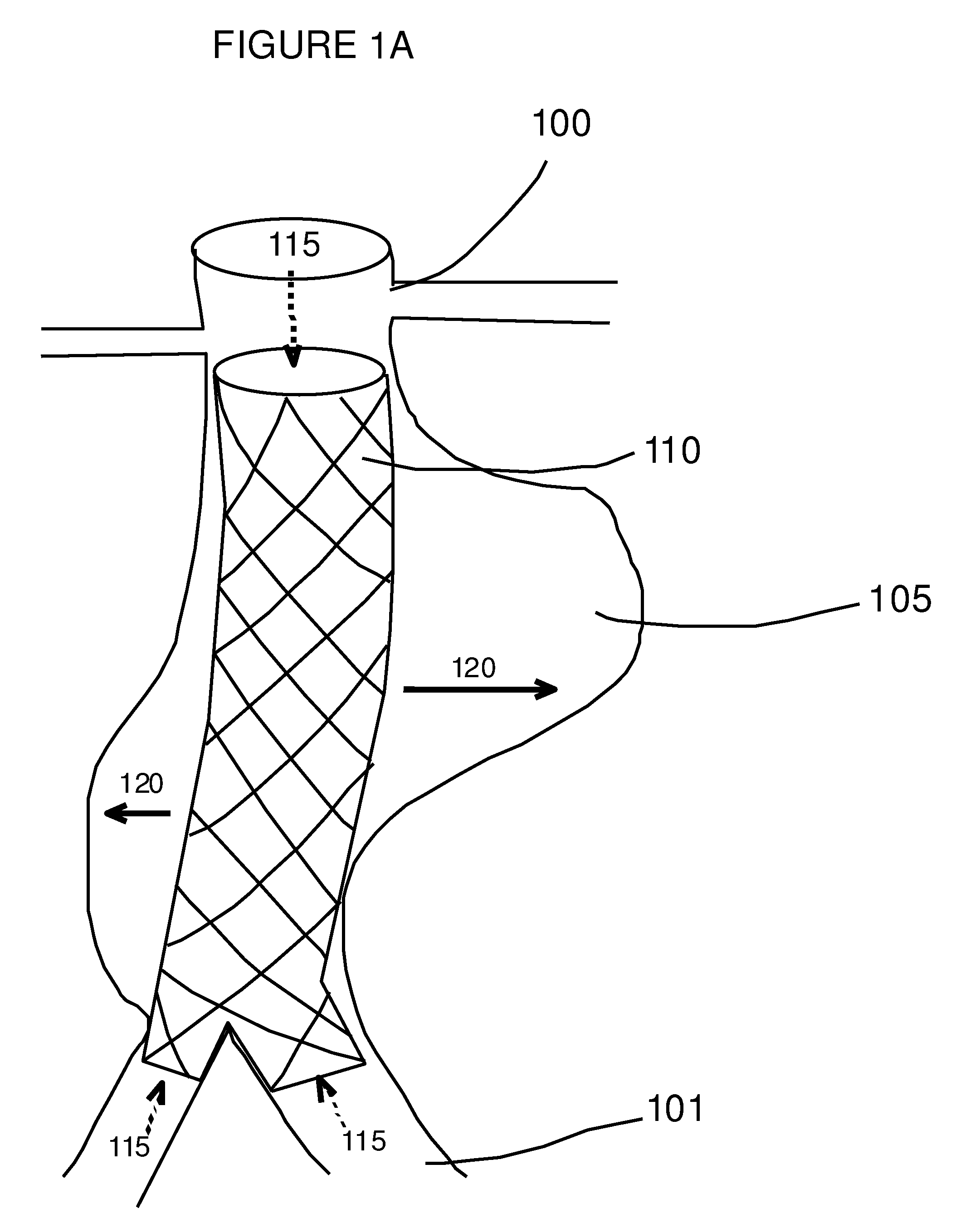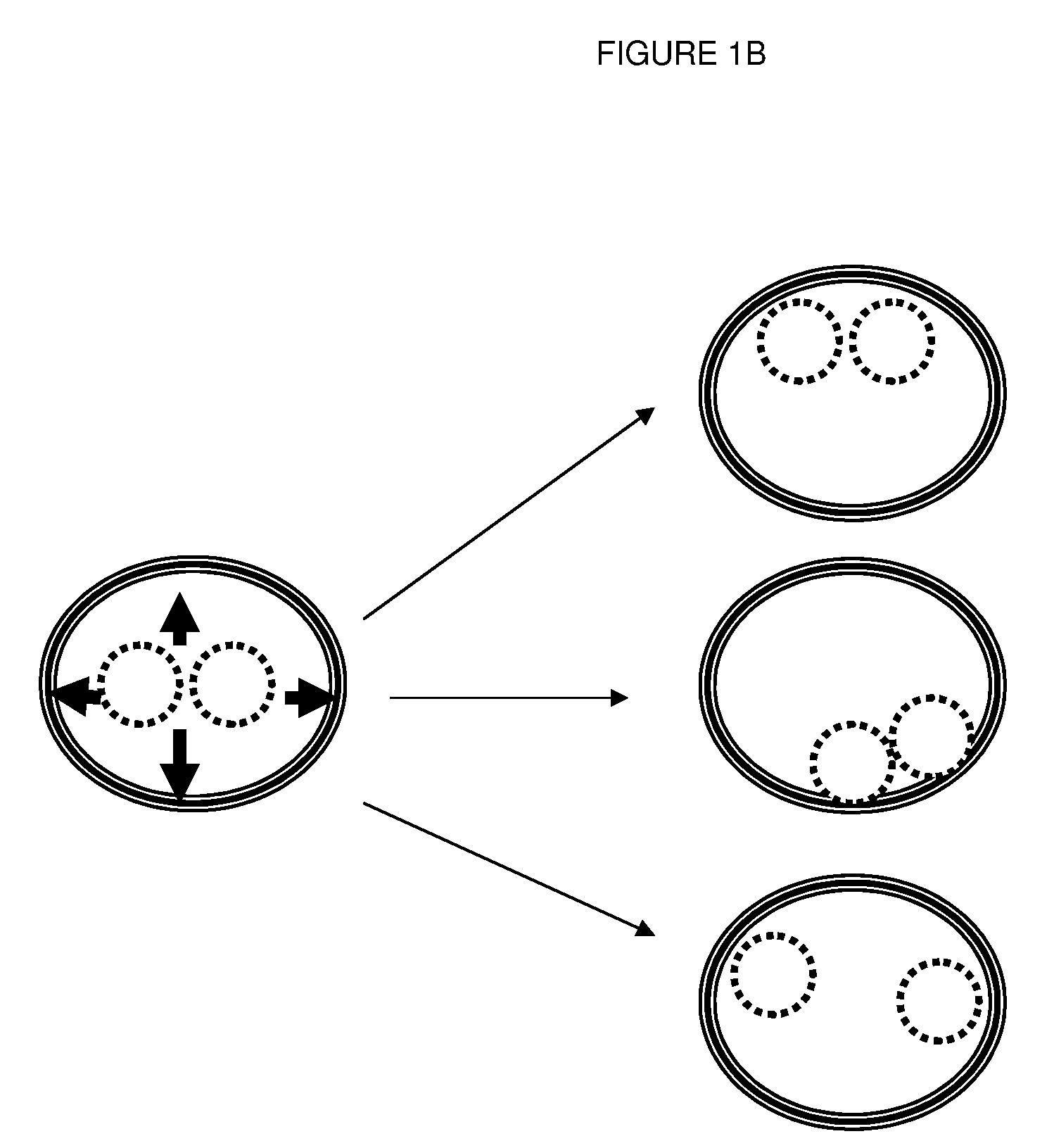Prevention of displacement of prosthetic devices within aneurysms
a prosthetic device and aneurysm technology, applied in the field of prevention of prosthetic device displacement within aneurysms, can solve the problems of increasing the risk of aneurysm damage, increasing the size of the aneurysm, and reducing the stability and durability of endovascular repair, so as to prevent the possibility of increasing/decreasing the curvature of the endovascular device, preventing lateral displacement, and enhancing the resistance to aorti
- Summary
- Abstract
- Description
- Claims
- Application Information
AI Technical Summary
Benefits of technology
Problems solved by technology
Method used
Image
Examples
Embodiment Construction
[0036]Downward displacement of stent-grafts can accompany lateral displacement of the endograft within the aneurysm sac, where lateral displacement is defined as a change in the three-dimensional position of the stent graft within the aneurysm sac. For the infrarenal aorta, stent graft migration (or the downward movement of the proximal portion of the stent graft) occurs when there is lateral movement of the stent graft within the aneurysm sac with little or no downward movement of the distal ends of the limbs.
[0037]The present invention provides methods and compositions for reducing the lateral displacement of an aortic endovascular device. A stabilization system comprising one or more stabilizing elements is inserted within the aneurysm space between an implanted device and the vessel wall. Filling this space prevents changes in curvature of the implanted endovascular device, and prevents longitudinal displacement, thereby providing for improved long-term stability and durability ...
PUM
 Login to View More
Login to View More Abstract
Description
Claims
Application Information
 Login to View More
Login to View More - R&D
- Intellectual Property
- Life Sciences
- Materials
- Tech Scout
- Unparalleled Data Quality
- Higher Quality Content
- 60% Fewer Hallucinations
Browse by: Latest US Patents, China's latest patents, Technical Efficacy Thesaurus, Application Domain, Technology Topic, Popular Technical Reports.
© 2025 PatSnap. All rights reserved.Legal|Privacy policy|Modern Slavery Act Transparency Statement|Sitemap|About US| Contact US: help@patsnap.com



